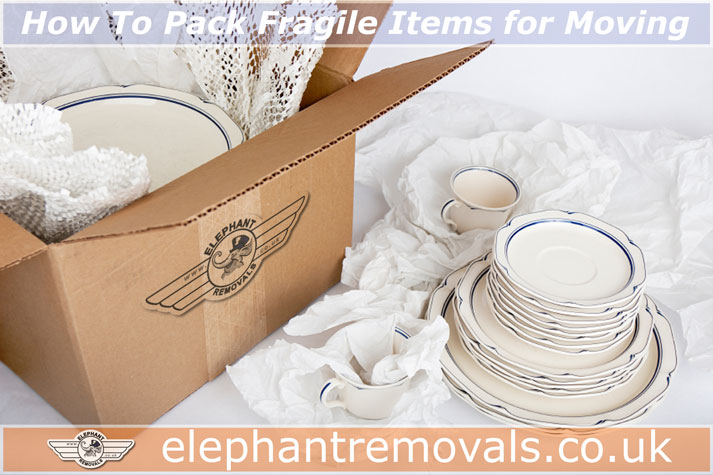
How To Pack Fragile Items for Moving
Whether you are moving or storing, discover astonishing ways on how to pack fragile items and personal effects to save time and overall cost. Best packing tips to avoid damage to breakable items for moving and storage. When relocating and it comes to the delicate natured items, the best practice is always; better to be safe than sorry! Learn how to pack delicate items and valuables like professional packers.
How To Pack Fragile Items Without Bubble Wrap
The alternative would be using purpose-built packaging paper or to save more cost, if you are on a tight budget, make the most of newspapers for smaller glassware and cutleries. For crockeries, you may wrap them all around in old clothes especially towels. For larger fragile natured items, cover them with bed sheet as it is a great replacement for bubble wrap, due to the softness and best protection against scratches, dust, and dirt. These are best alternatives on how to pack fragile items without bubble wrap, but don't forget to store in a marked dedicated fragile box. For other jaw-dropping tips, continue ahead.
How To Pack Fragile Items For Shipping
These are the most at-risk items during home removal, take these precautions to avoid damages during house moves. If your fragile item is odd shaped with inaugural or empty spaces, plug them with bubble wrap or crumpled-up paper. Lay paper baguette-sandwich bumper layers in between to maximise protection. If you aren’t comfortable on how to pack fragile items for shipping, hire professional packers.
How to Pack Glass Vases for Moving
Amongst the top 5 breakables, undoubtedly, drinking glasses are the first on the list, however, you can easily prevent damage by.
- Pack them in a suitable box. The safest box to use are called “Dish-pack” boxes have thick double walls for extra protection.
- Place glasses horizontally onto the packing paper and roll the glass in it making sure to tuck the paper’s sides in. Wrap as many times as needed to secure the glass. Once wrapped like a submarine sandwich, label it to prevent the glass being thrown out with the wrapping paper when unpacking.
- Make crumpled packing paper like submarine a sandwich to pad the bottom and the top of the box at the end. Alternatively, use a towel or any other clothes that you are comfortable with.
- The most secure way to place wrapped glasses is vertically in the box in one layer.
- Add a few films of packing paper between each layer of glasses.
- Place scrunched up ball packing paper like a meatball in between to fill any empty spaces, this will also prevent glasses moving around and touching each other.
For a lot more tips on packing glasses, discover our dedicated page with jaw-dropping ways on how to pack glasses for moving safely.
Packing Plates - Best Way to Pack Plates
Plates are usually wrapped inadequately, however, preventing damages are easy when packing plates for moving. Again, by wrapping the plates with as much packing paper as needed and placing them vertically into a cushioned box. Place sheets of paper or bubble wrap onto each layer of plates and finally fill any extra space with crumpled paper.
Packing Paintings - The Best way to Pack Canvas Artwork, Picture Frames and Mirrors
- The best way to pack paintings for moving or framed art is to use a picture box.
- Line the box’s bottom with crumpled sheets of paper.
- Place artwork in the box and pack all sides and top of the box with paper and/or bubble wrap.
- Apply a cling-film or pallet wrap and if your painting or print has a glass cover, take a fragile tape and place an X across the glass and write 'Glass Inside' for best moving experience.
How to Pack Lamp-Shades for moving
Packing large and awkward shaped lampshades can be tricky and so;
- Use individual moving cartons for each lamp-shade
- Wrap each lampshade entirely in bubble wrap.
- Fill the shade’s interior with crumpled packing paper.
- Cushion the box with crumpled packing paper and after placing the lampshade inside, secure it with more crumpled paper to prevent shifting.
Packing Equipment
Placing multiple parts of stereo equipment in one box without the padding, of course, can cause all kinds of unwanted results, to prevent damage:
- Wrap the first component in bubble wrap, completely covering it.
- Tape the bubble wrap which keeps it in a place whilst placing the item vertically into a box, ideally a “dish-pack” box or a double-wall box
- Wrap the next part then put it into the box next to the first one. Do not stack, but place as many as you can side by side.
- Fill any spaces with crumpled paper, then add paper to the top for extra padding.
Fragile Box Label
Fragile and delicate items susceptible to breaking or cracking require purpose-built packaging materials to cushion adequately during transportation for maximum protection. If you are seeking help from movers, make sure you label any moving cartons that require extra care with the word “fragile.” This way, they will know to be more gentle when moving the box.
In the Original Packaging
Whenever and wherever possible, using the original packaging box would save the hassle and rule out many issues. When on DIY mode, remember not to make boxes too heavy, as excessive weight could potentially cause injuries. Use small boxes for heavier items whilst making sure you’ve used the tape several times (i.e. glasses, plates, etc.) at least twice in both directions just in case.
How to Pack Fragile Items for Moving

Thanks for reading our tips on Packing Fragile Items, remember, perfection naturally comes with practice, if you are uncomfortable packing your precious treasure, don’t stress out over these issues, relax and let house removals london professionals from our moving company London handle them for you no matter where you are in the UK. We can either part pack (just fragile) or full pack your entire home. We adjust our services to match your specific needs and create a bespoke package. Rest assured, your belongings will be packed correctly by our professional packers.
